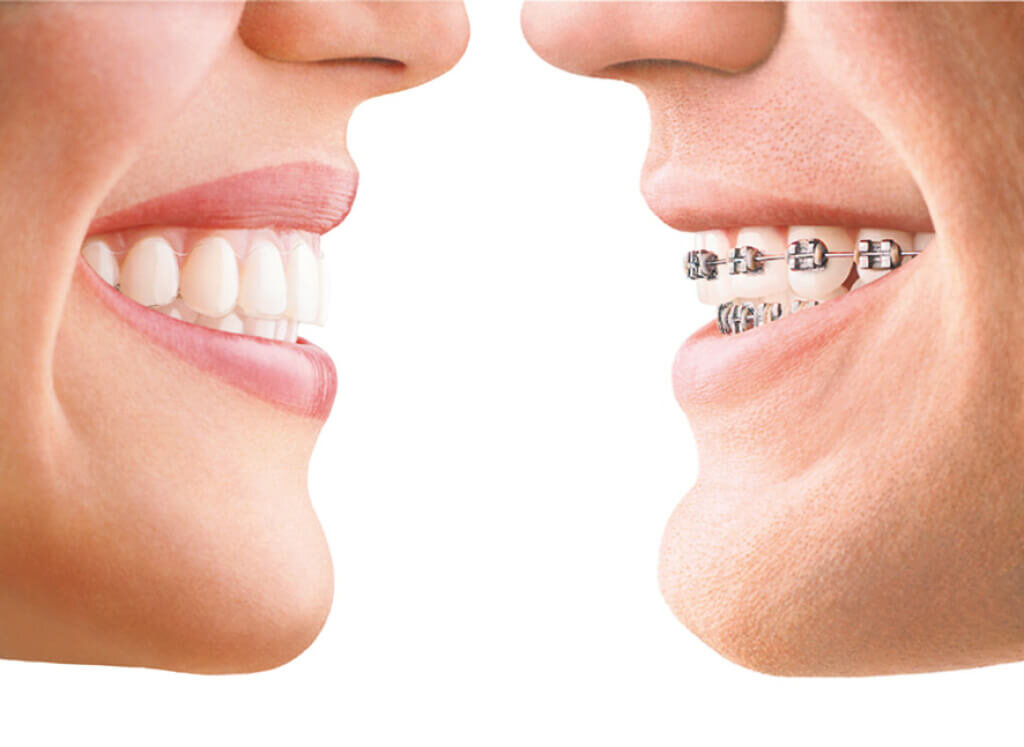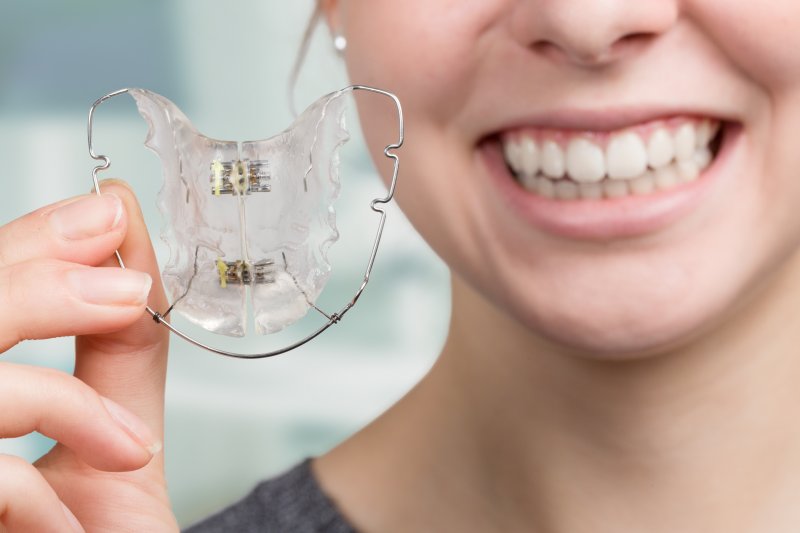Invisalign vs. Traditional Braces: Which Alternative Is Right for You?
When taking into consideration orthodontic therapy, the option in between Invisalign and traditional dental braces presents several crucial variables that warrant mindful analysis. Invisalign uses a very discreet alternative with detachable aligners, while traditional braces offer a much more visible yet reliable solution for severe misalignment. Each option encompasses distinct benefits and downsides related to aesthetic appeals, comfort, treatment duration, and cost. Comprehending these nuances is crucial for making a notified choice that lines up with your personal preferences and lifestyle. The concern remains: which option will best fulfill your orthodontic demands and assumptions?
Introduction of Treatment Options

On the other hand, conventional dental braces include metal braces and wires that are bound to the teeth. This approach uses continuous pressure with time to attain positioning. While efficient for intricate orthodontic issues, standard dental braces call for normal visits for modifications and can present obstacles in maintaining oral hygiene because of the trouble of cleaning around brackets and cables.
Both options have their benefits, and the option usually rests on specific dental conditions, lifestyle preferences, and individual conformity. Inevitably, speaking with an orthodontic expert is vital for determining the most appropriate treatment strategy customized to individual needs. Recognizing the subtleties of each option can dramatically affect the total success of orthodontic treatment.
Visual Considerations
A substantial variable influencing the selection in between Invisalign and conventional dental braces is the visual appeal each therapy uses. Invisalign aligners are crafted from clear plastic, making them practically unseen when used.
In contrast, typical braces consist of steel brackets and cords, which can be much more noticeable. While improvements in orthodontic technology have actually resulted in the growth of smaller braces and colored elastics, standard braces still preserve a more obvious profile. For some individuals, the presence of braces might prevent them from looking for required therapy.
Eventually, the selection between Invisalign and typical braces might rest on individual preferences regarding visual appeals. Individuals that focus on discernment typically favor Invisalign, while those who are much less concerned about exposure might decide for standard dental braces. Comprehending the visual effects of each option is important for making an educated decision that lines up with one's way of living and preferences.
Comfort and Convenience

In regards to ease, Invisalign aligners are detachable, allowing clients to enjoy their favored foods without limitation and maintain optimal dental health. Brushing and flossing are streamlined, as the aligners can be secured during these regimens, whereas standard dental braces need careful maneuvering around wires and braces.
In comparison, standard dental braces require normal adjustments, making them much less hassle-free for those with busy routines. In general, the convenience and convenience of Invisalign make it an attractive selection for visite site many individuals looking for orthodontic therapy.
Therapy Duration and Performance
While both Invisalign and traditional braces work in correcting dental misalignments, the period of treatment can differ considerably in between the 2 options. Commonly, Invisalign treatment can take anywhere from 12 to 18 months, depending on the complexity of the situation. The clear aligners function by progressively shifting teeth into their desired settings, and normal follow-ups with an orthodontist aid make certain progress remains on the right track.
In comparison, standard dental braces often require a longer commitment, typically varying from 18 months to 3 years. This is because of their set nature and using cords and brackets, which can be more effective for complex instances and severe imbalances (Invisalign). The therapy performance of typical dental braces is well-documented, as they enable specific changes and greater control over tooth motion
Ultimately, the choice between Invisalign and typical dental braces might rest on both the anticipated therapy period and the certain dental issues handy. Consulting with an orthodontist is crucial, as they can provide customized suggestions based upon individual demands, guaranteeing the selected technique aligns with desired durations and outcomes.
Price Contrast and Insurance Coverage Options
Cost plays a substantial function in the decision-making process for people taking into consideration orthodontic treatment, whether opting for Invisalign or standard braces. Typically, the expense of Invisalign ranges from $3,000 to $8,000, while standard braces typically set you back between $2,000 and $6,000. Aspects influencing these prices include the intricacy of the case, the period of treatment, and geographical area.
Insurance protection can considerably influence out-of-pocket costs. Many oral insurance strategies provide partial protection for orthodontic therapies, however the specifics can differ widely. It is critical for clients to assess their insurance coverage plans to determine the extent of insurance coverage for visit this site either option. Usually, conventional dental braces might be much more regularly covered by insurance plans read review contrasted to Invisalign, which some insurance firms categorize as a cosmetic treatment.
In addition, numerous orthodontic practices provide flexible settlement plans, making both treatment choices more easily accessible. Patients ought to ask about possible funding alternatives and price cuts for ahead of time settlements. Evaluating the total price, including insurance coverage benefits and layaway plan, is vital for making a notified decision that aligns with both aesthetic preferences and budget factors to consider.

Verdict
In recap, the selection between Invisalign and standard braces hinges on multiple factors, including visual choices, convenience, therapy duration, and cost. Invisalign supplies a very discreet, detachable choice that assists in oral hygiene and dietary adaptability, while typical dental braces may be better for complex oral problems and typically come at a lower rate point. Ultimately, consultation with an orthodontist is necessary to analyze private circumstances and determine one of the most suitable treatment alternative for accomplishing optimal oral alignment.
When considering orthodontic therapy, the choice in between Invisalign and standard braces presents numerous crucial aspects that merit cautious examination.Comparing Invisalign and standard braces discloses distinct therapy options for orthodontic correction.While both Invisalign and typical braces are reliable in fixing oral misalignments, the duration of therapy can vary dramatically in between the 2 choices.Price plays a significant duty in the decision-making process for individuals taking into consideration orthodontic treatment, whether deciding for Invisalign or traditional braces.In recap, the choice in between Invisalign and typical braces hinges on numerous elements, consisting of visual preferences, comfort, therapy period, and price.